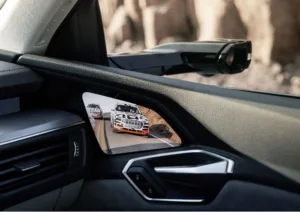On September 24 The Korea Herald dreported that Samsung Display Corp. will invest US $11 billion to convert its L8 LCD production line in Tangjeong to production of quantum-dot OLED (QD-OLED) television displays. Samsung Display has made no secret of its serious program to develop QD-OLED displays, in which all of the OLED sub-pixels are blue and shine their light through a patterned quantum-dot film that converts the appropriate sub-pixels to red and green.

There are a couple of serious issues with this scheme. First, of all the OLED emitting materials blue is the least efficient and is the most prone to ageing. Second, SDC was unable to develop a quantum-dot conversion film that absorbed all of the blue light as it passed through the patterned areas of quantum dots that were supposed to convert all of the blue light to green or red. The blue light leaking through compromised color purity. The solution was to place a matrix color filter on the viewer side of the conversion film. This works but adds to the cost and complexity of the structure. Still, SDC pressed on and now seems almost ready to build one our more manufacturing lines.
To quote OLED-Info, “According to the report, SDC’s investment will be the single largest investment in Korea’s display industry ever. The L8-1-1 LCD line will be shut down immediately, and converted to QD-OLED production. SDC will also shut down its second line (L8-2-1) and in total the two fabs will be able to produce 200,000 8-Gen glass substrates each month (down from the current 360,000 substrates in LCD production today). Mass production of QD-OLED panels will begin in 2022. Following the shut-down of the L8 LCD line, SDC will have only one single large-area LCD line remaining, in Suzhou, China.
Since SDC has not, to the best of my knowledge, made public any photos of a QD-OLED, I will show you this SDC 7-inch OLED in the camera mirror system that is an option in the European version of the all-electric 2019 Audi e-tron. I have seen this system, and, the OLED did not look this bright or well-saturated on a cloudy-bright day. (Image: Samsung Display)
According to DSCC, Samsung’s QD-OLEDs will offer several advantages compared to LG’s current WRGB (four subpixels + color filters) system. Samsung will be able to use three sub pixels and only two emitting layers (LGD uses four), and so its stack will include 13 layers compared to 22 layers in LGD’s TVs – which means fewer deposition stages, improved yields and lower material costs. In fact, DSCC estimates that a square meter of QD-OLED production will require materials that cost around $26 – compared to almost $95 in a meter of WOLED production.”
That sounds pretty exciting, but the most definitive statement SDC CEO Lee Dong-hoon would make at the time was “the company is making good efforts” and could begin volume production in the “near future.”
We still have much to learn, including such minor details as development schedule, cost, performance, and lifetime. (KW)
Ken Werner is Principal of Nutmeg Consultants, specializing in the display industry, manufacturing, technology, and applications, including mobile devices, automotive, and television. He consults for attorneys, investment analysts, and companies re-positioning themselves within the display industry or using displays in their products. He is the 2017 recipient of the Society for Information Display’s Lewis and Beatrice Winner Award. You can reach him at [email protected] or www.nutmegconsultants.com.

